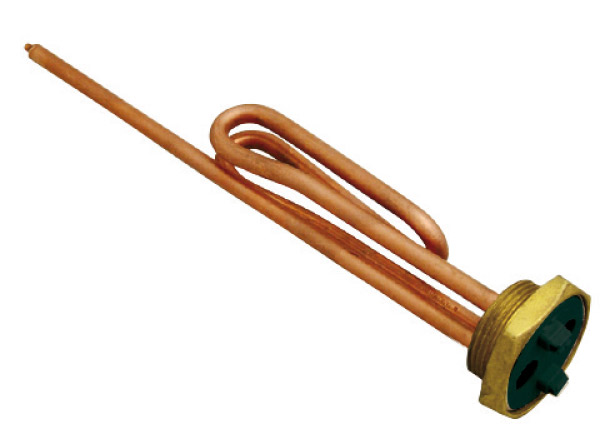Limiting corrosion in tubular electrical heating systems
Tubular electrical heating systems increase their life span if the hardness of the water in the installation is checked.

Realized with high purity copper pipes, tubular electrical heating systems spend most of their time dipped in water, constantly warming up and cooling down, controlled by a thermostat, capable of being fitted directly on them, which we are able to find in the GNALI BOCIA catalogue.
On coming into contact with the liquid on the surface of tubular electrical heating systems, by virtue of the substances dissolved in water, particularly with regard to hard waters or waters strongly disinfected with chlorine to make it drinkable, electrophilic compounds are formed and dissolved gas is released. Whereas the gas might be eliminated through automatic air vent valves, the rest necessitates a different solution.
As an aid to tubular electrical heating systems, we may install a sacrificial anode in magnesium, which will get corroded in lieu of the heating system, thereby substantially increasing its duration. We should bear in mind, however, that the hardness of the water in the installation is an important factor in respect of corrosion; the dissolved minerals contribute to modifying the conductivity of the fluid.
It should be further borne in mind that in order to reduce the generation of dissolved gases, hence the noisiness, tubular electrical heating systems should be chosen with a specific power per unit area not exceeding 9 watt/cm2.
On coming into contact with the liquid on the surface of tubular electrical heating systems, by virtue of the substances dissolved in water, particularly with regard to hard waters or waters strongly disinfected with chlorine to make it drinkable, electrophilic compounds are formed and dissolved gas is released. Whereas the gas might be eliminated through automatic air vent valves, the rest necessitates a different solution.
As an aid to tubular electrical heating systems, we may install a sacrificial anode in magnesium, which will get corroded in lieu of the heating system, thereby substantially increasing its duration. We should bear in mind, however, that the hardness of the water in the installation is an important factor in respect of corrosion; the dissolved minerals contribute to modifying the conductivity of the fluid.
It should be further borne in mind that in order to reduce the generation of dissolved gases, hence the noisiness, tubular electrical heating systems should be chosen with a specific power per unit area not exceeding 9 watt/cm2.
24/03/2016
I contenuti di questo sito non hanno carattere di periodicità e non rappresentano 'prodotto editoriale'.








